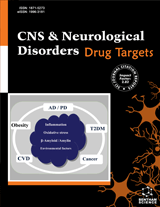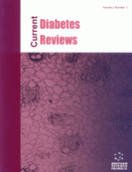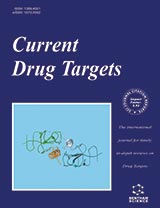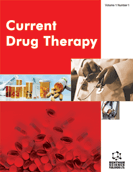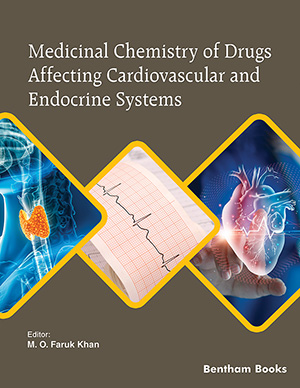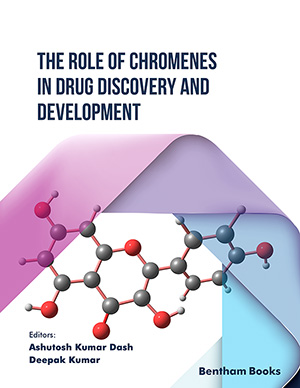Abstract
Iron is a vital element required by almost all cells for their normal functioning. The well-established role of iron in oxidative metabolism, myelination and synthesis of neurotransmitter makes it an indispensable nutrient required by the brain. Both iron deficiency and excess have been associated with numerous patho-physiologies of the brain, suggesting a need for iron homeostasis. Various studies have reported that the immune effector cells of the brain, the microglial cells, are involved in iron homeostasis in the brain. Microglial cells, which accumulate iron during the developmental period, have a role in myelination process. Along with the increased iron accumulation documented in neurodegenerative diseases, the striking finding is the presence of iron positive microglial cells at the foci of lesion. Though excess iron within activated microglia is demonstrated to enhance the release of pro-inflammatory cytokines and free radicals, a complete understanding of the role of iron in microglia is lacking. The present knowledge on iron mediated changes, in the functions of microglia is summarized in this review.
Keywords: Microglia, iron accumulation, iron transport, inflammatory cytokines, free radicals, iron chelators.
CNS & Neurological Disorders - Drug Targets
Title:Consequences of Iron Accumulation in Microglia and its Implications in Neuropathological Conditions
Volume: 12 Issue: 6
Author(s): Gurugirijha Rathnasamy, Eng-Ang Ling and Charanjit Kaur
Affiliation:
Keywords: Microglia, iron accumulation, iron transport, inflammatory cytokines, free radicals, iron chelators.
Abstract: Iron is a vital element required by almost all cells for their normal functioning. The well-established role of iron in oxidative metabolism, myelination and synthesis of neurotransmitter makes it an indispensable nutrient required by the brain. Both iron deficiency and excess have been associated with numerous patho-physiologies of the brain, suggesting a need for iron homeostasis. Various studies have reported that the immune effector cells of the brain, the microglial cells, are involved in iron homeostasis in the brain. Microglial cells, which accumulate iron during the developmental period, have a role in myelination process. Along with the increased iron accumulation documented in neurodegenerative diseases, the striking finding is the presence of iron positive microglial cells at the foci of lesion. Though excess iron within activated microglia is demonstrated to enhance the release of pro-inflammatory cytokines and free radicals, a complete understanding of the role of iron in microglia is lacking. The present knowledge on iron mediated changes, in the functions of microglia is summarized in this review.
Export Options
About this article
Cite this article as:
Rathnasamy Gurugirijha, Ling Eng-Ang and Kaur Charanjit, Consequences of Iron Accumulation in Microglia and its Implications in Neuropathological Conditions, CNS & Neurological Disorders - Drug Targets 2013; 12 (6) . https://dx.doi.org/10.2174/18715273113126660169
| DOI https://dx.doi.org/10.2174/18715273113126660169 |
Print ISSN 1871-5273 |
| Publisher Name Bentham Science Publisher |
Online ISSN 1996-3181 |
Call for Papers in Thematic Issues
Diagnosis and treatment of central nervous system infectious diseases
Infectious diseases of the central nervous system (CNS) can be divided into bacterial, tuberculous, viral, fungal, parasitic infections, etc. Early etiological treatment is often the most crucial means to reduce the mortality rate of patients with central nervous system infections, reduce complications and sequelae, and improve prognosis. The initial clinical ...read more
Techniques of Drug Repurposing: Delivering a new life to Herbs & Drugs
Of late, with the adaptation of innovative approaches and integration of advancements made towards medical sciences as well as the availability of a wide range of tools; several therapeutic challenges are being translated into viable clinical solutions, with a high degree of efficacy, safety, and selectivity. With a better understanding ...read more
Trends and perspectives in the rational management of CNS disorders
Central nervous system (CNS) diseases enforce a significant global health burden, driving ongoing efforts to improve our understanding and effectiveness of therapy. This issue investigates current advances in the discipline, focusing on the understanding as well as therapeutic handling of various CNS diseases. The issue covers a variety of diseases, ...read more
 66
66
- Author Guidelines
- Graphical Abstracts
- Fabricating and Stating False Information
- Research Misconduct
- Post Publication Discussions and Corrections
- Publishing Ethics and Rectitude
- Increase Visibility of Your Article
- Archiving Policies
- Peer Review Workflow
- Order Your Article Before Print
- Promote Your Article
- Manuscript Transfer Facility
- Editorial Policies
- Allegations from Whistleblowers
Related Articles
-
Subject Index to Volume 2
Current Medicinal Chemistry - Cardiovascular & Hematological Agents Edaravone (3-Methyl-1-Phenyl-2-Pyrazolin-5-one), A Novel Free Radical Scavenger, for Treatment of Cardiovascular Diseases
Recent Patents on Cardiovascular Drug Discovery Gene Therapy Targeting Inflammation in Atherosclerosis
Current Pharmaceutical Design Drp1 in Ischemic Neuronal Death: An Unusual Suspect
Current Medicinal Chemistry Lipid Rafts and Redox Regulation of Cellular Signaling in Cholesterol Induced Atherosclerosis
Current Cardiology Reviews Neurodegenerative Diseases and Flavonoids: Special Reference to Kaempferol
CNS & Neurological Disorders - Drug Targets Disruption of Circadian Rhythms and Sleep on Critical Illness and the Impact on Cardiovascular Events
Current Pharmaceutical Design Neuroprotection & Mechanism of Ethanol in Stroke and Traumatic Brain Injury Therapy: New Prospects for an Ancient Drug
Current Drug Targets Angiogenic and Antiangiogenic Factors in Proliferative Diabetic Retinopathy
Current Diabetes Reviews Plasma Rich in Growth Factors Enhances Wound Healing and Protects from Photo-oxidative Stress in Dermal Fibroblasts and 3D Skin Models
Current Pharmaceutical Biotechnology Molecular Mechanisms of Cytokine-Induced Neuroprotection: NFκB and Neuroplasticity
Current Pharmaceutical Design Antioxidant Therapy in Alzheimers Disease: Theory and Practice
Mini-Reviews in Medicinal Chemistry Plasminogen Activator Inhibitor-1 in Vascular Thrombosis
Current Drug Targets A Key Role for Connexin Hemichannels in Spreading Ischemic Brain Injury
Current Drug Targets Coated with Nanomaterials Intraocular Lenses, Ophthalmic and Human Body Implantable Devices with High Catalytic Antioxidant Activities: A New Nanotechnology Strategy of Peroxidase Cellular Enzyme Mimics Increasing the Biocompatibility and Therapeutic Deployment of the Medical Prosthetic Device
Recent Patents on Drug Delivery & Formulation Targeting Water in the Brain: Role of Aquaporin-4 in Ischemic Brain Edema
Current Drug Targets Impact of Matrix Metalloproteinases on Atherosclerosis
Current Drug Targets Coronary No-Reflow Phenomenon in Clinical Practice
Current Pharmaceutical Design Hyperglycemia and Perioperative Glucose Management
Current Pharmaceutical Design Multitarget Antithrombotic Drugs
Current Topics in Medicinal Chemistry


